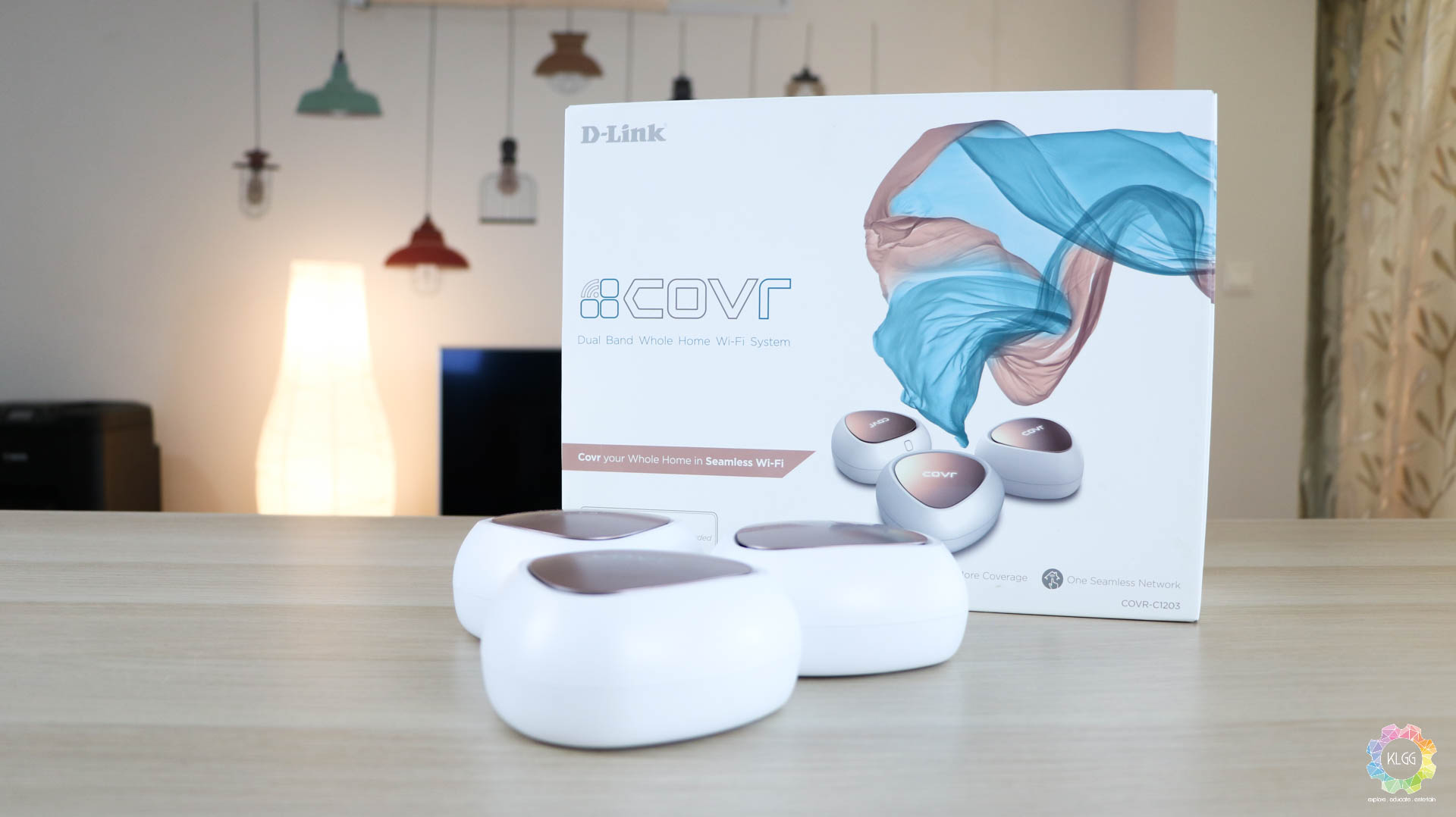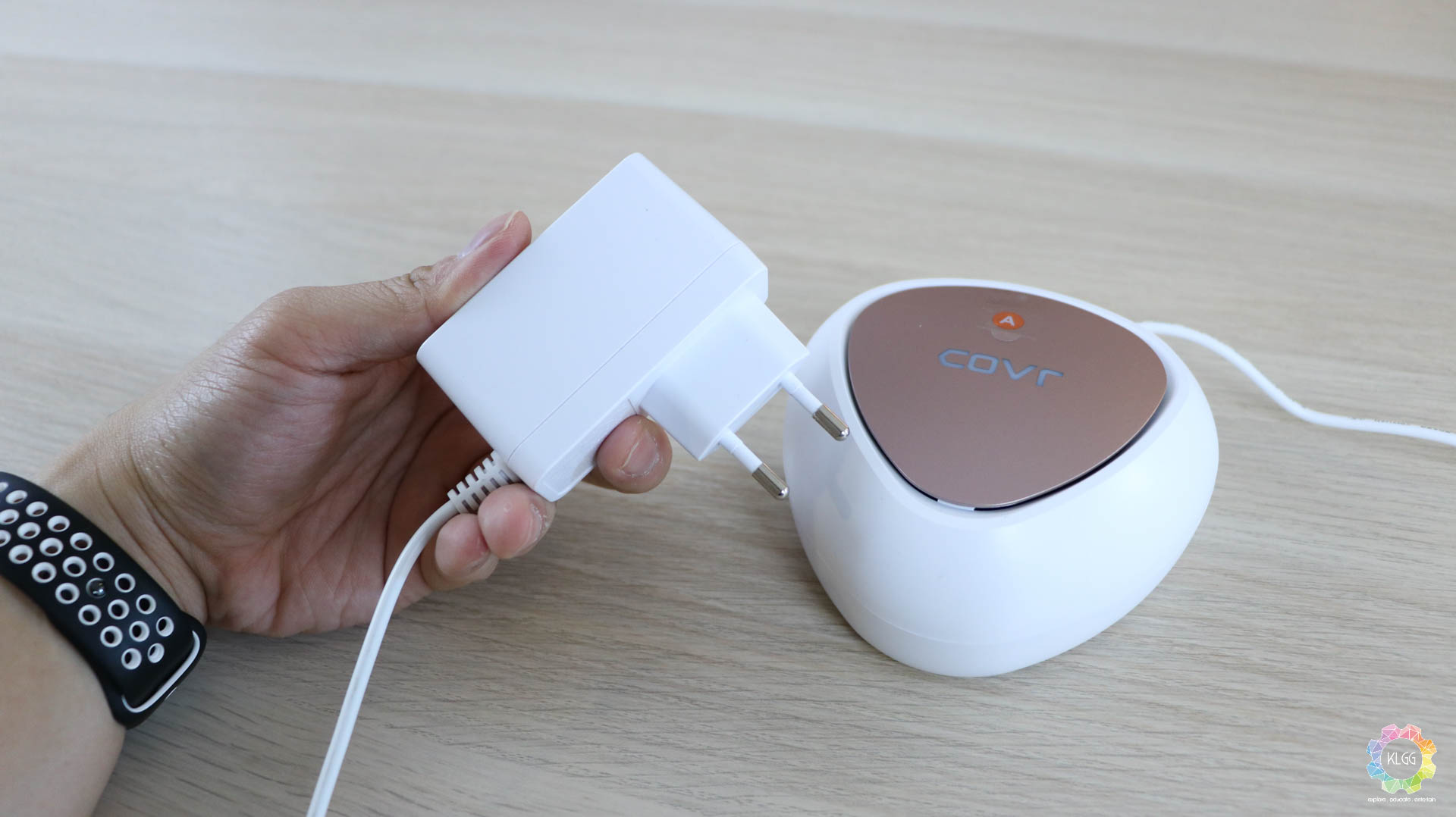Mesh routers have become popular for large homes due to its simplicity and form factor, it is particularly useful if your entire household depend on WiFi to get access to the Internet, while requiring an extensive coverage to enjoy the best of your Internet connection. D-Link has kindly passed us the COVR-C1203 for our review, a stylish looking entry-level mesh system that costs RM799, which isn’t cheap as compared to a standard AC1200 router, but most importantly, can it fix WiFi coverage woes?
Hardware and Design
 While some of my friends thought that the router’s design looks a little weird, I personally like how D-Link makes it easily recognizable from its competitors with a swapable plastic plate, our review unit comes fitted with the gold plate and D-Link has kindly provided two additional blue plates in the package.
While some of my friends thought that the router’s design looks a little weird, I personally like how D-Link makes it easily recognizable from its competitors with a swapable plastic plate, our review unit comes fitted with the gold plate and D-Link has kindly provided two additional blue plates in the package.
Like other mesh systems, the COVR-C1203 comes with one main node that connects to your Internet gateway supported by two other nodes. I like the fact that the nodes are powered by a single USB-C cable over a 5V3A output, which you can technically use any USB adapters that support such output and hook up your own USB-C cable if you want to.
I’m not a fan of the two-pin European adapter that D-Link provides out of the box, as it blocks other socket outlets if I plug it into a multi-gang socket or a dedicated power outlet, but they are thankfully long enough that you won’t need an extension.
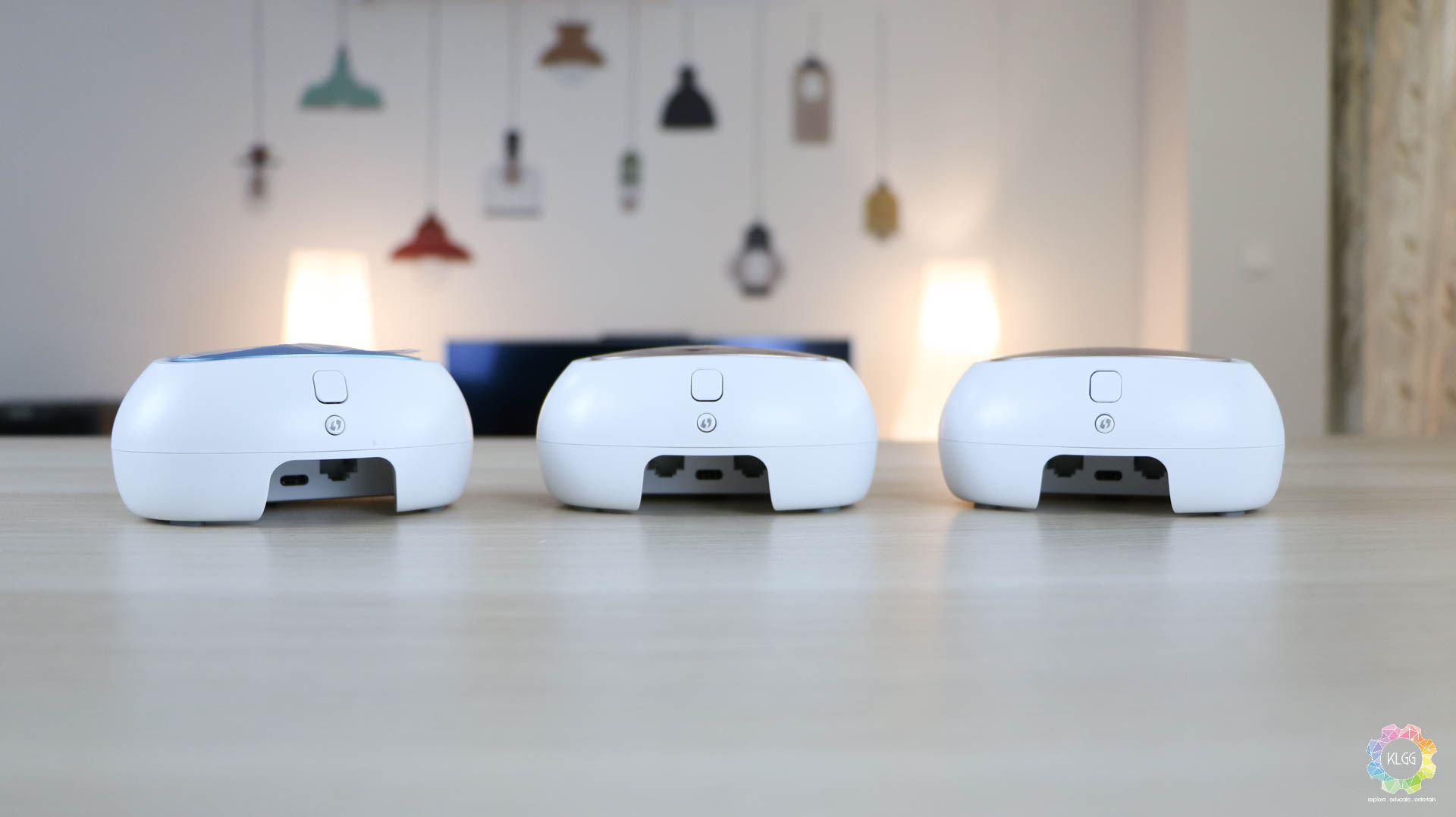 Every node comes with two Gigabit LAN ports at the back, which the main A point has one used for WAN connection and the other for LAN connection, the B and C node’s LAN ports can be used for connecting wired devices, which is convenient. Finally, there’s a WPS button on every node so that you don’t need to go all the way to the main node if you want to easily connect your wireless devices.
Every node comes with two Gigabit LAN ports at the back, which the main A point has one used for WAN connection and the other for LAN connection, the B and C node’s LAN ports can be used for connecting wired devices, which is convenient. Finally, there’s a WPS button on every node so that you don’t need to go all the way to the main node if you want to easily connect your wireless devices.
Setup and Software
 Routers have become extremely easy to setup all thanks to the convenience of their respective companion apps. The D-Link COVR-C1203 uses the D-Link WiFi app that is available for Android and iOS devices, setting it up was a breeze as it guides you through the steps of setting up the nodes properly, the two nodes automatically connect to the Point A node once the setup is successful. Otherwise, you can also use the conventional way by using your computer’s web browser, which is in fact faster and straightforward if you ask me.
Routers have become extremely easy to setup all thanks to the convenience of their respective companion apps. The D-Link COVR-C1203 uses the D-Link WiFi app that is available for Android and iOS devices, setting it up was a breeze as it guides you through the steps of setting up the nodes properly, the two nodes automatically connect to the Point A node once the setup is successful. Otherwise, you can also use the conventional way by using your computer’s web browser, which is in fact faster and straightforward if you ask me.
 The COVR-C1203’s management software is simple and straightforward; the dashboard shows your network infrastructure and the signal strength of the two supporting nodes. Like other D-Link routers, you can set parental controls on a client on the dashboard.
The COVR-C1203’s management software is simple and straightforward; the dashboard shows your network infrastructure and the signal strength of the two supporting nodes. Like other D-Link routers, you can set parental controls on a client on the dashboard.
Back then when I reviewed the higher end DIR-895L, I complained the lack of certain configuration on the router’s management software and unfortunately, the COVR-C1203’s software is even more limited.
 For instance, you are not able to configure both 2.4GHz and 5GHz networks separately, so it is up to the router to decide the frequency your device should be connected to, which sucks because in most cases it keeps your device connected to the 2.4GHz band and that limits your connection speed.
For instance, you are not able to configure both 2.4GHz and 5GHz networks separately, so it is up to the router to decide the frequency your device should be connected to, which sucks because in most cases it keeps your device connected to the 2.4GHz band and that limits your connection speed.
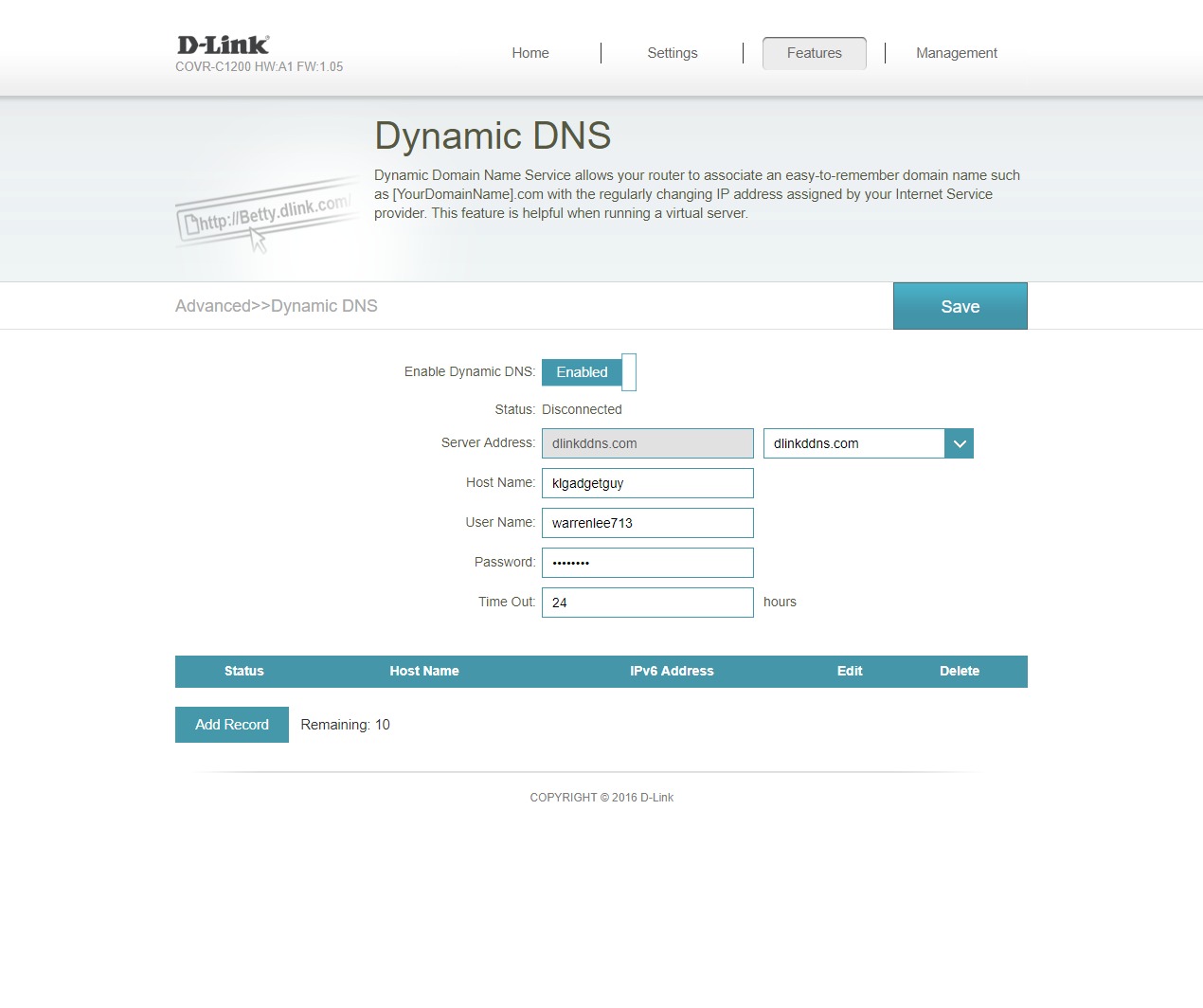 DDNS service is available, which you can utilize D-Link’s free DDNS service to set a hostname to easily connect remotely back to your home network for port forwarding purposes, the software unfortunately lacks VPN Server functionality, which is a shame considering routers at that price range already have the feature built-in, but it isn’t a deal breaker.
DDNS service is available, which you can utilize D-Link’s free DDNS service to set a hostname to easily connect remotely back to your home network for port forwarding purposes, the software unfortunately lacks VPN Server functionality, which is a shame considering routers at that price range already have the feature built-in, but it isn’t a deal breaker.
Performance
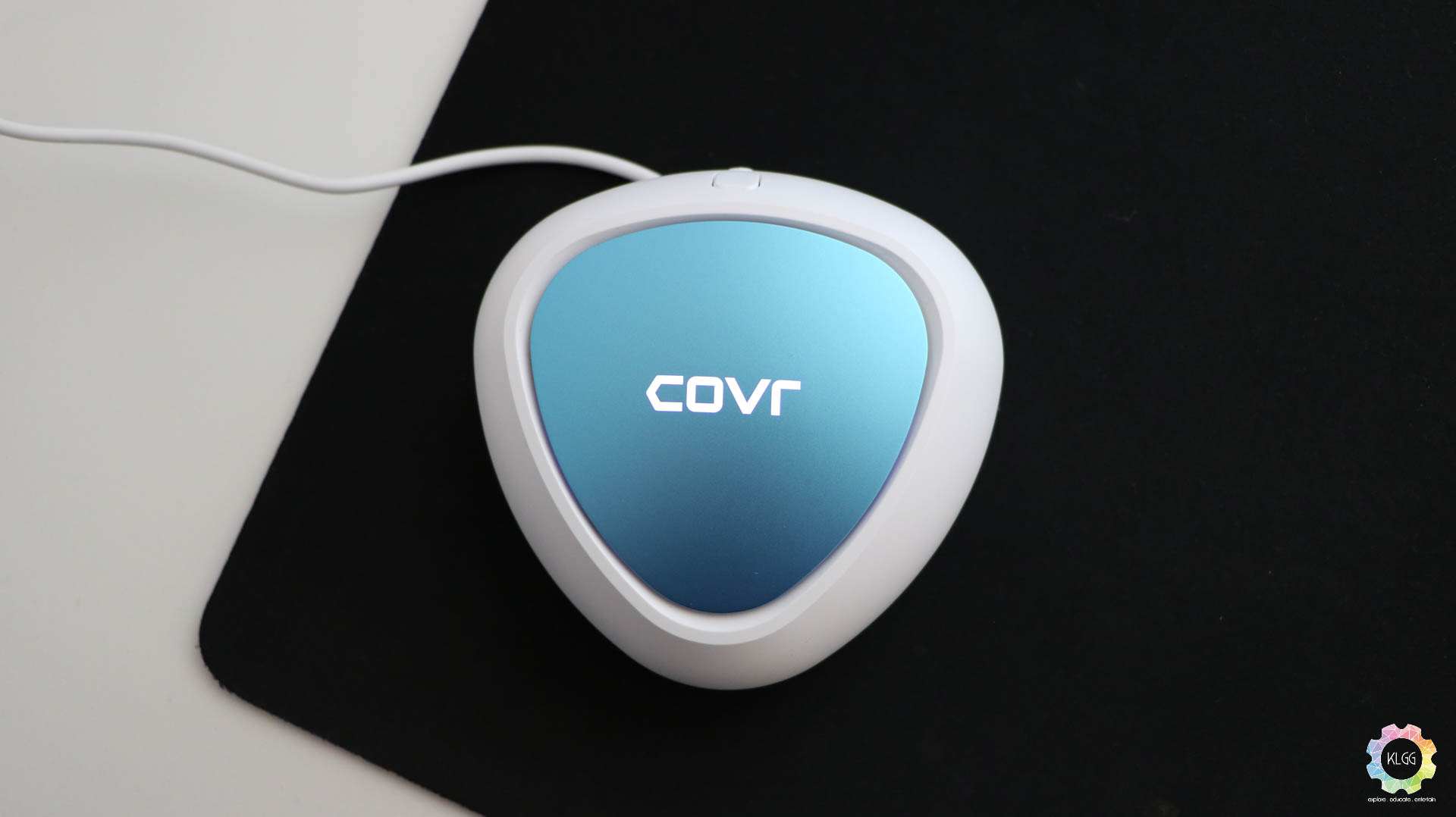 As mesh routers are products focused on extending coverage from the main node, data transfer can differ from devices to devices, even when standing at the same spot. The D-Link COVR-C1203 is definitely capable of delivering optimal coverage on my 3200 sq. ft home, using the Huawei Mate 20 Pro, I managed to record 95Mbps of download speed on my 100Mbps Unifi connection with a signal strength of -55dBm (less dBm means better signal strength).
As mesh routers are products focused on extending coverage from the main node, data transfer can differ from devices to devices, even when standing at the same spot. The D-Link COVR-C1203 is definitely capable of delivering optimal coverage on my 3200 sq. ft home, using the Huawei Mate 20 Pro, I managed to record 95Mbps of download speed on my 100Mbps Unifi connection with a signal strength of -55dBm (less dBm means better signal strength).
Using a free WiFi Analyzer app, I realized that the router did a pretty good job of switching between 2.4GHz and 5GHz as I move around different spots in my house, though oddly there has been a couple of times that the WiFi network would suddenly disconnect momentarily when I’m connected at the same spot for more than an hour, otherwise in most cases I would be able to achieve around 40-50Mbps of download speed on dead spots, it is an obvious improvement from having WiFi signals broadcasted single handedly by my very own TP-Link Archer C5400 router.
As for fixed LAN connection, the supporting nodes can keep up to its maximum download speed with a reasonably fast 6-7ms ping response when tested using Speedtest.net, despite being a slight delay with my usual 2-3ms ping when connected directly to my original router.
Verdict
The D-Link COVR-C1203 is a good mesh router to start off if you are on a budget to extend your home’s WiFi network coverage, but you’ll be trading off some networking features such as VPN Server and separate network frequency configuration, it also cannot serve as a coverage extender to any of the company’s existing routers. At RM799, there’s absolutely no excuse not to invest in one if you own a huge home that requires good WiFi coverage, though personally I won’t be depending on this for heavy file transfers, but at least it does help to keep my WiFi connection stay alive wherever I am in the house.
The Good
- Good automatic band switching performance
- Powered using USB-C
- Swappable color plates for easy identification
- Good for Internet connections below 100Mbps
The Not so Good
- Occasional disconnects
- Limited router software features

